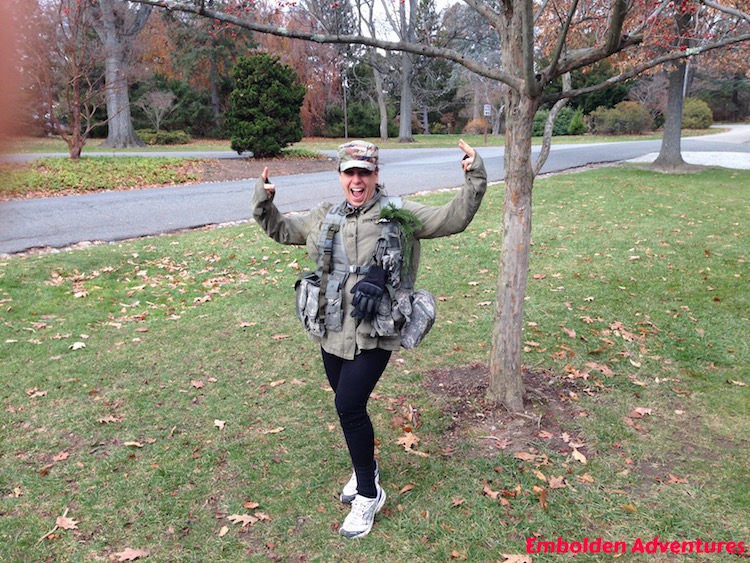If done right, Mount Kilimanjaro can be conquered. So I plan to be as prepared as possible from New York City. Hear what my US Army Ranger friend taught me during my one of my training hikes.
And join me in my journey this year as I ready myself to summit this mountain along with my friends from around the world.
Countdown to Kilimanjaro
Just like training for a marathon, training for Kilimanjaro requires commitment to be able to make it to the top. If you can walk a marathon, it is possible to run one too.
Physical stamina is important when running a marathon. Mental stamina is just as important. Mind over matter especially during the hard parts when your brain tells you to quit. That mental strength improves over time through training.
Perhaps the same is true for Kilimanjaro. Take it slowly, walk with a trusted experienced guide, and have the right preparedness. Although, none of us will really know if we will succumb to altitude sickness until we are on the trail ascending up to over 19,000 feet.
Depending on the route, we can expect to walk between 23 and 56 miles (37 to 90 kilometers) and ascend 10,000 to 13,000 feet (3,000 to 4,000 meters) to reach 19,341 feet. Routes start as low as 6,000 feet (about a mile above sea level!) and as high as 9,000 feet.
As a result, we may walk up to 8 miles (13 kilometers) for about 7 hours per day.
“Pole, Pole” the guides will tell you in Swahili – “Go Slowly”. The slower the better and take extended breaks to acclimatize your muscles to the lower oxygen levels. At 16,000 feet, the atmosphere has half as much oxygen compared to at sea level. Normally, oxygen makes up 20% of the air we breathe. With strenuous climbing over a 7 or 8-day duration in exhausting, cold, and uncomfortable conditions, the struggle is real. However, depending on which route you take and how slow you go, the Kilimanjaro National Park calculates a 65% success rate across all climbers over all routes in reaching the top of Kili.

Fun Fact
Kilimanjaro is the fourth most prominent peak in the world behind number 1, Everest, number 2, Aconcagua in Argentina, and number 3, Denali in Alaska. A prominent peak is measured in height from the lowest point of ascension to the top of the peak.
Kilimanjaro is also the highest freestanding mountain in the world, meaning that it is not part of any mountain range.
Training with a United States Army Ranger
After Thanksgiving, I joined my Army Ranger Elite friend for his Army training into the wilderness of Ringwood State Park. This park is located on the border of New Jersey and New York states.
It was a cold, crisp, sunny fall day with a few strong gusts of wind. It felt good to be outside in the fresh air deep into the wilderness.
We set off to climb up the ridge, a hike that would take us about 4 hours and maybe 6 miles of hiking. We pushed up the steep inclines in the woods through the trees and the leaves and the granite boulders.
I stopped to feel the large rocks in the woods. Rocks give me comfort. They drain negative energies from my body and deposit them into the earth. They calm me. Find out more about mystical properties of rocks here.
The mountains and the volcanoes, like Kilimanjaro, provide the same healing effects. Spiritual energy can be felt in the mountains. There is just something about the mountains. In the case with Kilimanjaro, the local Masai people consider it to be the “House of God.”
During our hike, I was finding my breathing was labored. As a result, I was taking fast, repetitive, and shallow breaths out of the mouth. While I was catching my breath, my friend offered some tips to keep in mind on the mountain.
Hiking Kilimanjaro: Quick Tips From a US Army Ranger
Proper Breathing Technique
- Breathe in slowly through the nose taking deep breaths from the belly button
- Calm the breath and expand the lungs
- Exhale out the mouth with short, quick breaths
This type of breathing will deliver more oxygen to the muscles, a very important technique when we start climbing into the higher elevations.
Improving Mental Stamina
My friend told me that we can control our body through our breathing. Therefore, our minds and never our bodies should always be in control.
Also he said that Army Rangers are taught to “Embrace the Suck.” Know that things will get very hard sometimes. To be able to get through any challenge, and perhaps scary experience, he said to:
- First recognize that it is difficult
- Next be comfortable with the difficulty
- And finally watch how the difficult experience subsides
Be aware of yourself in that moment, and embrace it as it happens. Respect that it is hard. Remind yourself calmly and confidently that you will get through it. Also don’t forget to breathe!
Walking Up a Hill with a Heavy Backpack
- Use the full, foundational strength of your legs to push yourself up the hill as if you are rising from a lunge
- Make your steps deliberate, solid, and strong
- Rely on your center of gravity located at your core
- Do not lead up the hill with your shoulders and upper back or you risk straining yourself
- Cinch your backpack straps so that the backpack is tight and flush to your back
Walking Down a Hill with a Heavy Backpack
- Walk downhill in a switchback pattern as if you were downhill skiing. Place your feet perpendicular to the direction of the hill
- Do not walk downhill directly because you may lose your footing and tumble forward
- Again, make your steps deliberate, solid, and strong
- Loosen your backpack straps so your backpack lowers towards your core. It keeps you balanced and makes you less top-heavy
When Packing Your Backpack
- Be sure to pack the heavier items on the bottom and the lighter items on the top so that the backpack balances with your center of gravity at your core
If the heavier items are in the top of the backpack and you bend over, you could get knocked off balance and perhaps fall down the hill. This idea is key when climbing Kilimanjaro.
…and lastly, Always Stay Hydrated!
- Drink plenty of water when on a long hike into the wilderness.
- Water aids muscle movement, alleviates fatigue, and helps with adjusting to the altitude.



